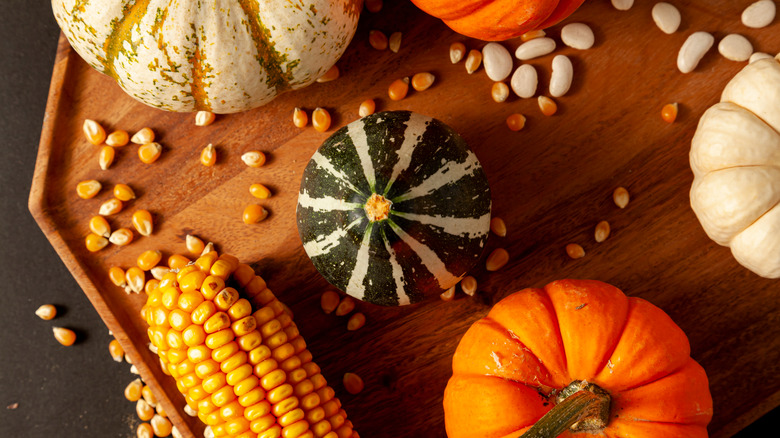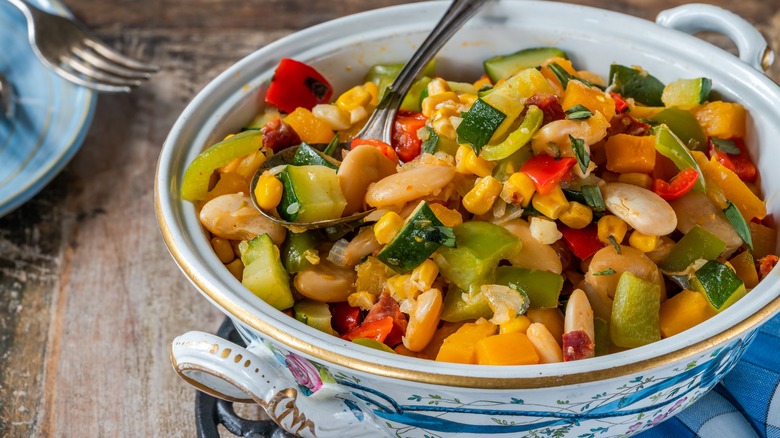Why Are Beans, Corn, And Squash Sometimes Called 'The 3 Sisters?'
Look into the history of indigenous planting practices throughout the Americas, and you'll soon find a common theme. In gardens across the continents, people have planted corn, beans, and squash together in small hills of soil. Typically, corn is planted first, followed shortly by beans in the same long, low mound. Then, between those mounds, indigenous gardeners grow squash or pumpkins. The sturdy corn (also referred to as maize) provides a natural trellis for beans, while the beans add plant-fertilizing nitrogen to the soil. At the same time, the low, broad leaves of squash and pumpkins provide shade, retain water, and cut off light from troublesome weeds. Taken together, these crops are known as the Three Sisters.
They're all part of a broader system known as companion planting, in which plants are grown in close quarters because they benefit one another. According to people in the tribes that make up the Haudenosaunee (Iroquois) Confederacy in the Northeastern U.S. and Canada, this particular trio also has great cultural importance. In some legends, the name "Three Sisters" refers to three women who represent each crop and find that they work much better together than alone. Other legends indicate that they come from the body of Sky Woman's daughter, indicating a spiritual component that is meaningful indeed for the matrilineal tribes of the Haudenosaunee. Evidence indicates that the cultural importance of this agricultural team goes farther back than colonial observers may have guessed, with roots in ancient Mesoamerica much farther to the south.
The Three Sisters provide plenty of nutrition
Besides the cultural and social meaning of the Three Sisters growing system, these plants also bring plenty of nutrition to the table. All of three of the plants provide plenty of calories, with an extra helping of protein from the beans and carbohydrates from the corn (maize crops are easily stored and transported, too). They're also packed full of nutrients, such as vitamin A in some varieties of pumpkin and a powerful combination of amino acids in all three. Taken together, they also produce more energy than when the same agricultural space is used in a single-crop monoculture.
Of course, there are many delicious ways to enjoy the crop of your Three Sisters garden. Perhaps the most classic dish produced by many tribes in the Haudenosaunee Confederacy is now called succotash. Today, succotash recipes incorporate all manner of summer produce, but for a take that honors the original trio, roast up some cubed squash and sauté corn kernels and beans alongside aromatics such as onion, garlic, and other seasonings. This is also a popular ingredient team in food the Southwest is known for, so don't be afraid to reach for other Southwestern and indigenous staples like chilis and fry bread to complete the meal.

